
Contact

Home
H. J. McCooey part 3
Yowie / Bigfoot
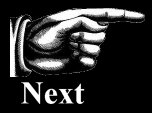
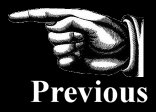
THE DEATH ADDER.
Australian Town and Country Journal (NSW)
Date: November 15, 1884
Page Number: 29

McCooey: "I may state in conclusion that no snake known ever had, or is ever likely to have, a sting in its tail."
HOW THE PLATYPUS BREEDS.
Australian Town and Country Journal (NSW)
Date: November 22, 1884
Page Number: 29

The verification of Mr. Caldwell's announcement to the members of the British Association is being looked for with interest. The discoveries of one so eminent in the scientific world cannot be passed over or ignored, but it must be borne in mind that if his announcement that the duck-billed platypus (Ornthorhynchus anatinus) is oviparous be confirmed, virtually Professor Owen is refuted. There is no escaping the force of the logic unless it be that the platypus in the tropics of Australia hatches its young from eggs, while in the southern and colder parts of the continent it brings forth its young alive. This hypothesis is far from being untenable, and deserves serious consideration. I shall not believe that even in hot climates the platypus is oviparous until Mr. Caldwell's announcement is clearly and satisfactorily confirmed.
...
That the platypus of New South Wales brings forth its young alive I firmly believe. That it burrows into the banks of the rivers and breeds in the manner described so accurately by Mr. Beveridge I have proved. No one who has read the articles written by your correspondents, Mr. Beveridge and " Kangaroo Shooter" (Inverell), will deny that these gentlemen have investigated this subject, and that their knowledge is sound.
...
I have proved that the spurs of the platypus are not venomous, by a series of experiments. The spur is a hard horny substance very much resembling (in substance) the spur on the wing of the plover. It is solid, not hollow. If the skin be pierced by this spur, either while the platypus is alive or after it is dead, no ill consequences ensue. In a word its prick is as harmless as that of the so-called sting of the death-adder. At the base of the spur there is a gland which contains a thick glutinous secretion, but this secretion is not poisonous, and I have proved that an injection of it into the human system is neither painful nor dangerous.
...
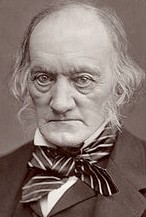

Sir Richard Owen, FRS KCB (20 July 1804 – 18 December 1892) was an English biologist, comparative anatomist and paleontologist.
Owen is probably best remembered today for coining the word Dinosauria (meaning "Terrible Reptile" or "Fearfully Great Reptile") and for his outspoken opposition to Charles Darwin's theory of evolution by natural selection. He agreed with Darwin that evolution occurred, but thought it was more complex than outlined in Darwin's Origin.
The British anatomist Richard Owen, disagreeing with the Frenchman’s theories of evolution, saw them as definitely mammals, and therefore,
he argued ‘ovoviviparous’ (the eggs were hatched inside the mother and the young born alive). SOURCE
THE NATIVE CAT—GAME BIRDS, &c.
Australian Town and Country Journal (NSW)
Date: November 29, 1884
Page Number: 33

...
If my views on this dasyure question are erroneous, it is some sort of consolation to know that I am erring in excellent company. It scarcely comes within my province to appeal to authorities and confirm every assertion as I proceed; on the contrary, I think the responsibility or proving me in error should rest with those mythical personages, the "old bush men of 57 years experience," who have manifested so much zeal and facility in contradicting me.
...
THE WOMBAT.
Australian Town and Country Journal (NSW)
Date: December 13, 1884
Page Number: 28

Our naturalist, Mr. M'Cooey, is taking great pains to enlighten your readers on very many
subjects ; yet there are several who will believe that T. H. V. may be nearer right about death adders than our distinguished observer
was about those "Australian Apes."
...
I know that a snake with a sting in the tail is generally considered a myth. Of course
nearly everyone knows that the ordinary adder, 18 to 30 inches or so long, has a"horn-like spine," as Mr.M'Cooey puts it, though it
is sometimes so sharp and long, that one might quite naturally speculate on its probable use, or why is the snake provided with it.
...
I
had some correspondence with the late curator, Mr. Kreff, about the snake with the sting in the tail. He said such a snake was unknown,
but very kindly took a lot of trouble in describing the ordinary death addor, and treated my correspondence in a very gentlemanly
way ; but failed to convince me that I was not right.
...
McCooey's "Australian ape" claims come back to haunt him when trying to reason against another myth of the Australian bush
- the snake with a venomous tail.
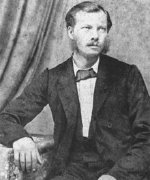
Johann Ludwig (Louis) Gerard Krefft (17 February 1830 – 19 February 1881), one of Australia's first and greatest zoologists and palaeontologists.
Krefft was fired in 1874. He was carried in his chair to the door of the Museum and thrown into the street. He had fallen foul of the Trustees, William John Macleay in particular, because he had accused them of using the museum's resources to augment private collections. They responded by accusing him of drunkenness, falsifying attendance records and even allowing the sale of dirty postcards. He subsequently brought an action against one of the trustees and obtained a verdict for £250. The judge held that Krefft was a superior officer under government, and that no one had power to remove him but the governor with the advice of the executive council. Subsequently parliament passed a vote of £1000 to be applied in satisfaction of Krefft's claims.



McCooey: "I have proved that the spurs of the platypus are not venomous"
While both male and female platypuses are born with
ankle spurs, only the male's spurs produce a cocktail of venom, composed largely of defensin-like proteins (DLPs), three of which
are unique to the platypus. The DLPs are produced by the immune system of the platypus. Although powerful enough to kill smaller animals
such as dogs, the venom is not lethal to humans, but the pain is so excruciating, the victim may be incapacitated. Oedema rapidly
develops around the wound and gradually spreads throughout the affected limb. Information obtained from case histories and anecdotal
evidence indicates the pain develops into a long-lasting hyperalgesia (a heightened sensitivity to pain) that persists for days or
even months. Venom is produced in the crural glands of the male, which are kidney-shaped alveolar glands connected by a thin-walled
duct to a calcaneus spur on each hind limb.
The Daily News (Perth, WA)
Date: January 5, 1885
Page Number: 3

Mr. H. J. M'Cooey, of Dubbo, thus relates his experiences of the habits of the platypus :—
...
THE FLYING-FOX.
Australian Town and Country Journal (NSW)
Date: January 17, 1885
Page Number: 25

COMMON NON-VENOMOUS SNAKE, ERRONEOUSLY TERMED SLOW WORM — DEATH ADDERS, &c.
Australian Town and Country Journal (NSW)
Date: January 24, 1885
Page Number: 25

IN REPLY TO "KANGAROO SHOOTER."
Australian Town and Country Journal (NSW)
Date: January 24, 1885
Page Number: 25

McCooey: "When the young kangaroo has attained a certain stage of development in the marsupium, the mother, when pursued by dogs,
can eject it at will, and frequently resorts to this practice."
RUPPELL'S BLIND SNAKE (TYPHLOPS RUPPELLI).
Australian Town and Country Journal (NSW)
Date: January 31, 1885
Page Number: 28

THE RINGED SNAKE (VERMICELLA ANNULATA.)
Australian Town and Country Journal (NSW)
Date: January 31, 1885
Page Number: 28

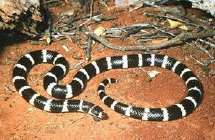
Bandy Bandy (Vermicella annulata)

In last June I wrote an article on this subject, which was criticised by a writer from near Armidale, who signed himself "Native." I did not reply to his article for the simple reason that I saw at a glance that he was referring to a different species of snake from that mentioned by me. He spoke of some snake which he was pleased to term the "Bandi bandi !" I don't know any by that name, nor is it known to science. The reptile I wrote of was the ringed snake (Vermicella annulata)...
It is unclear as to which snake McCooey considers to be Vermicella annulata.
SNAKES COMING ABOUT THE HOUSE.
Australian Town and Country Journal (NSW)
Date: February 21, 1885
Page Number: 29

It grieves me to the innermost recesses of my soul to hear your correspondent "Adelong" say that he is much troubled by snakes coming about the house, and his pathetic appeal, "Can you suggest any method of getting rid of snakes ?" has completely "fetched me." Many know but too well, alas ! what it is to be troubled with snakes. The snakes that trouble me have eyes like gig-lamps ; they coil round the bed-posts and spit fire. They make themselves quite at home in boots, in a hat, or in the pocket of a coat. They belong to a species known to lovers of Queensland rum as delirium tremens. It would give me pleasure to know if this is the particular species referred to by "Adelong!" But I must not digress. "Adelong" wants information, and of course he must get it ; I am determined to stand by his side in this hour of "trouble !" Provided that the snakes belong to any other species than the one above indicated, possibly these few modest suggestions may be a great and lashing service to him in insulting those unmannerly reptiles, and preventing them "coming about the house."
The best and simplest method of preventing a snake which pays one a friendly visit from calling again is to persuade it to remain! The "not at home" system won't bluff off a snake, for it can't or won't take a hint, and will keep calling like a tax collector till it does find one at home. The soundness of the foregoing proposition being admitted, I repeat therefore that the snake should on its first visit be persuaded to remain. In such instances a
Dutch hoe or a clothes prop possessing an undisputed amount of persuasiveness which borders on the sublime, while a brick-hat, a lump of coal, and a boot-jack are peculiar masters of eloquence !
Other methods of persuasion might be resorted to. For instance, if a snake be tied in a neat bow-knot and placed in a coal-box or a wash-tub, it always has the good manners to remain there until the people whom it has honoured by a visit are ready to wait upon it and exchange compliments. I can confidently assure "Adelong,'' at the great risk of being deemed untruthful, that if a trifling portion of the anatomy—the head, for instance—of the reptile be taken and placed in a jar of spirits of wine, it will at once discontinue its visits. This is perhaps the most telling insult that can be offered to any visiting snake-any snake of average intelligence.
Modesty prevents me from even hinting what a debt of gratitude "Adelong" now owes me, but I will not ask for payment nor praise. My consolation exists in the knowledge that generations yet unborn will sound the trumpet of praise !
H. J. M'COOEY.
George-street, Sydney.
McCooey reveals an unusual sense of humour in this article.
THE WOMBAT (PHASCOLOMYS WOMBAT).
Australian Town and Country Journal (NSW)
Date: February 21, 1885
Page Number: 29

ARE WOOD ADDERS POISONOUS ? NO.
Australian Town and Country Journal (NSW)
Date: February 21, 1885
Page Number: 29

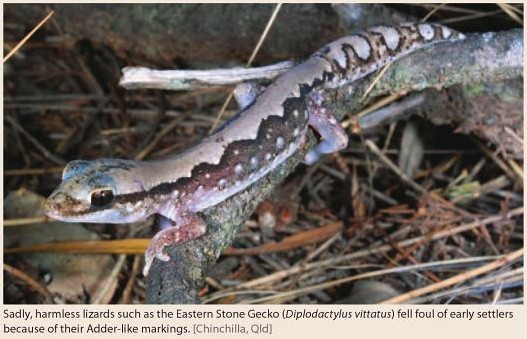
AUSTRALIAN BIRDS.
Australian Town and Country Journal (NSW)
Date: March 28, 1885
Page Number: 28

...
More recently much has been effected in this department of zoology by Mr. E. P. Ramsay, the present curator of the Australian Museum, to whom great credit is due. He has thrown considerable light upon the subject of the admixture of the bird fauna of other countries with our own.
...
Mr Ramsay, the learned ornithologist and curator of the Sydney Museum...
It seems that McCooey had not only resolved his earlier dispute (see Oct 20 and Nov 3, 1883) with Ramsay but become somewhat
of an admirer.
MR. HENRY ROSE'S IGUANA.
Australian Town and Country Journal (NSW)
Date: April 4, 1885
Page Number: 25

Has that " friend at Goulburn" again been whispering "old Bushman's" fables into Mr. Rose's ears, or am I to believe that this gentlemanhas actually discovered an iguana? According to Mr. Rose, not only has he discovered an iguana, but he speaks of it in the most complimentary
and confident manner as a rabbit devourer... I wish him to just draw a little nearer to his subject, as it were, and allow me
to come as another "friend at Goulburn" for one moment, while I whisper in his ear the following startling sentence : "We have no
iguanas in Australia, Mr. Rose ; but we have many lizards." I don't wish to chide Mr. Rose, much less his "friend at Goulburn;" and
it would pain me to know that either he or his friend thought me flippant or abusive, but I wish him to be precise. I love precision. The
true iguana belongs to a genus of lizards which is found only in South America, and has no connection whatever with the Australian
species.
...
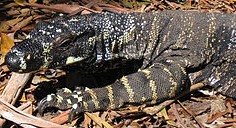

McCooey: "We have no iguanas in Australia"
Goanna is the name used to refer to any number of Australian monitor lizards of the genus Varanus, as well as to certain species from Southeast Asia.
The name goanna might have been derived from iguana, as early European settlers likened goannas to the South American lizards. Over time, the initial vowel sound was dropped. A similar explanation is used to link possum to the American opossum.





























